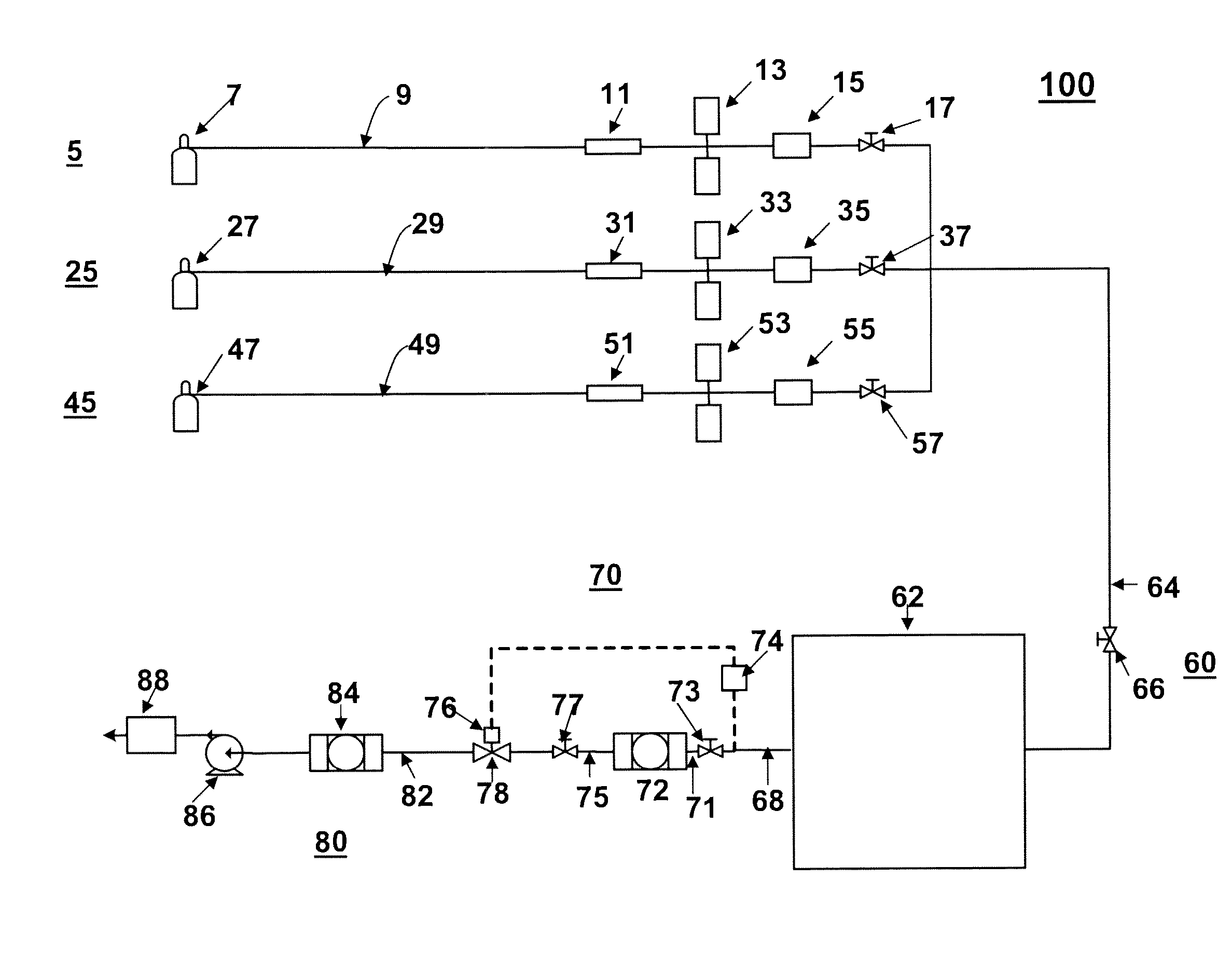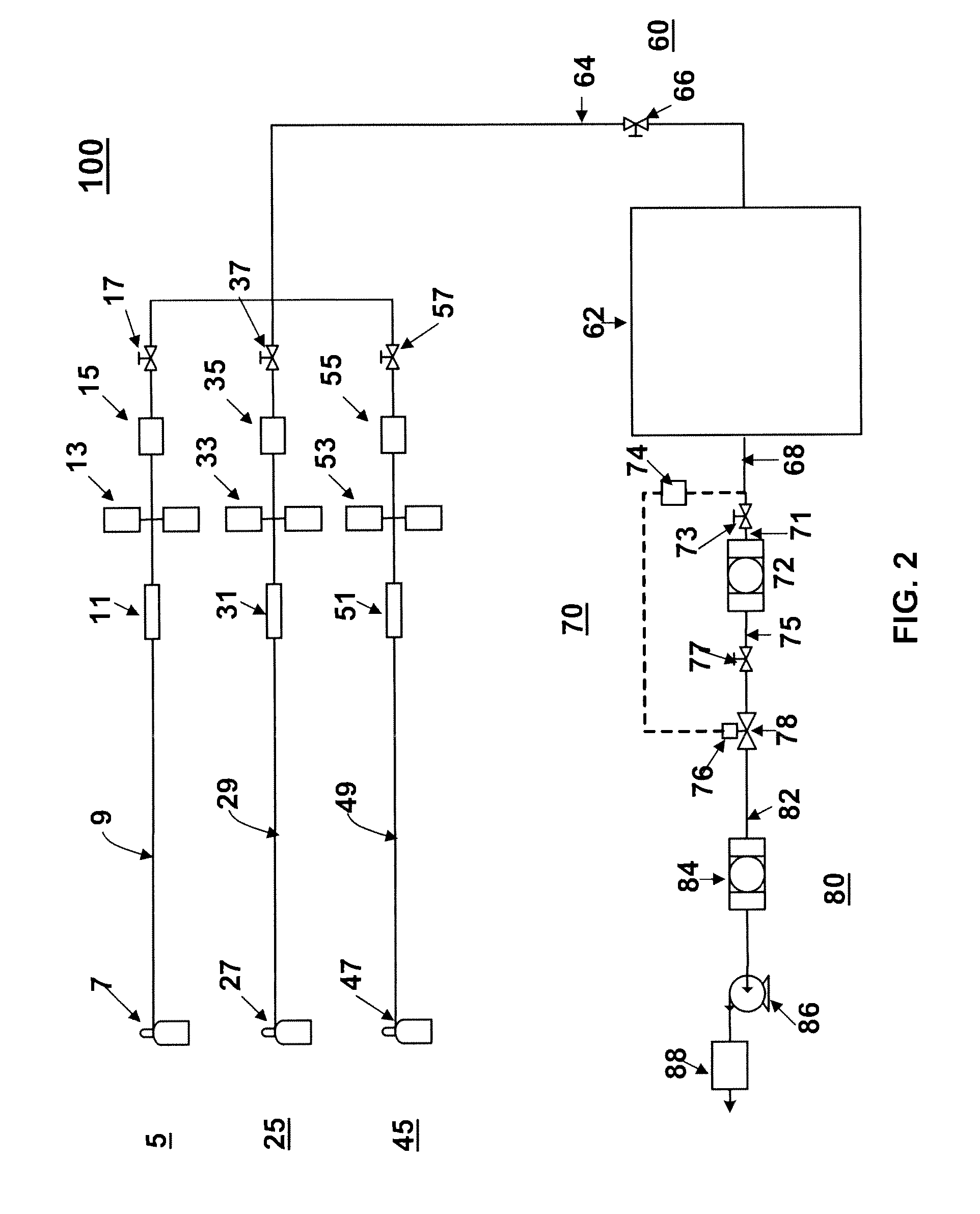In situ modification of group iv nanoparticles using gas phase nanoparticle reactors
a technology of gas phase nanoparticles and group iv nanoparticles, which is applied in the field of in situ modification can solve the problems of poor quantum yield of group iv nanoparticles (10% or less), inability to passivate by oxidation, and inability to meet the integrity requirements for use in the range of optoelectronic devices
- Summary
- Abstract
- Description
- Claims
- Application Information
AI Technical Summary
Problems solved by technology
Method used
Image
Examples
example
[0048]A set of grafted Group IV nanoparticles was produced by the two-stage laser pyrolysis reactor assembly 260 as shown in FIG. 4, in which a silicon nitride surface layer was deposited on silicon nanoparticles, in accordance with the invention. In this example, a silane primary precursor gas (at a flow rate of about 40 sccm) was combined with a helium purge gas (at a flow rate of 2500 sccm) and then flowed into two-stage laser pyrolysis reactor assembly 260, in order to form the core. In addition, an ammonia secondary precursor gas (at a flow rate of about 300 sccm) was also flowed in order to form the shell. The chamber pressure was maintained at about 650 Torr. The laser power was 104 W, with a beam height (H1 as shown in FIG. 5) of 1.5 mm.
[0049]Consequently, it was shown in transmission electron micrograph (TEM) images that adjusting the nozzle height (H2 of FIG. 5) to about 4 mm produced grafted Group IV nanoparticles that did not significantly dissolve in 1 M KOH. In contras...
PUM
| Property | Measurement | Unit |
|---|---|---|
| diameter | aaaaa | aaaaa |
| diameter | aaaaa | aaaaa |
| diameter | aaaaa | aaaaa |
Abstract
Description
Claims
Application Information
 Login to View More
Login to View More - R&D
- Intellectual Property
- Life Sciences
- Materials
- Tech Scout
- Unparalleled Data Quality
- Higher Quality Content
- 60% Fewer Hallucinations
Browse by: Latest US Patents, China's latest patents, Technical Efficacy Thesaurus, Application Domain, Technology Topic, Popular Technical Reports.
© 2025 PatSnap. All rights reserved.Legal|Privacy policy|Modern Slavery Act Transparency Statement|Sitemap|About US| Contact US: help@patsnap.com



